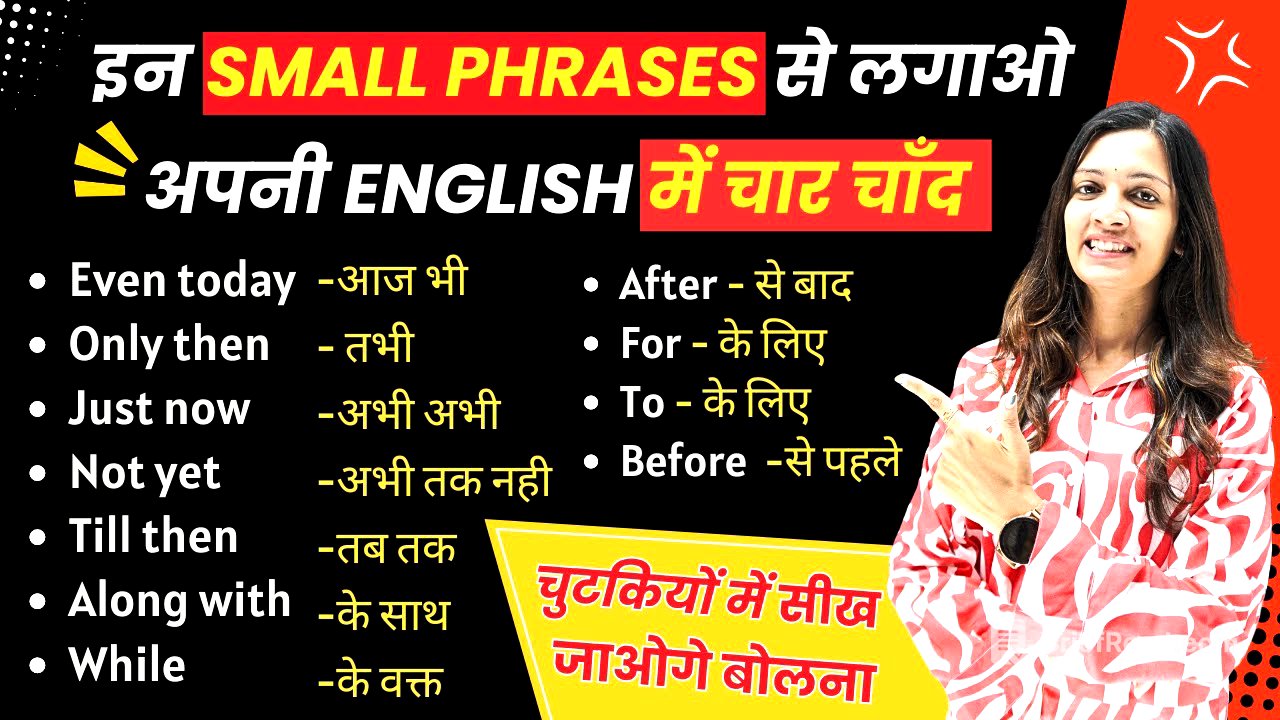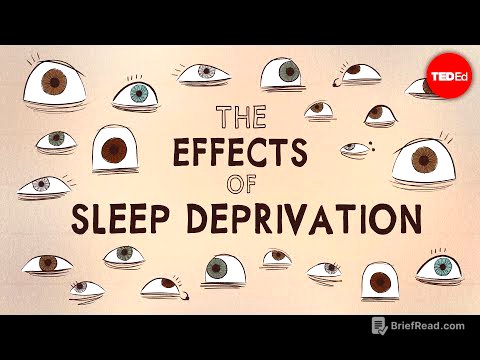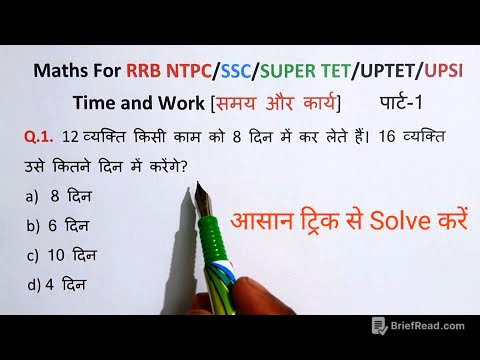TLDR;
This video focuses on teaching viewers how to use small but important English phrases to enhance their daily conversations. It covers phrases like "still," "while + ing," "by + ing," "before + ing," "after + ing," "along with," "to," "for," "even today," "only then," "till then," "not yet," and "just now," providing examples and explanations for each. The lesson aims to help learners avoid getting stuck on these common phrases and improve their overall fluency.
- Covers essential English phrases for daily conversation.
- Provides clear explanations and examples for each phrase.
- Encourages viewers to practice and incorporate the phrases into their speech.
Introduction [0:00]
The video introduces a lesson on small but significant English phrases that often arise in daily conversations. These phrases include "just then," "even today," "for then," "till now," "not yet," "still," "for doing," "before," and "after." The instructor emphasizes the importance of these phrases and promises to provide clear examples and practice to help viewers easily incorporate them into their English.
Still [0:57]
The word "still" is explained to mean "abhi tak" (until now). It is used to indicate that an action or state continues up to the present moment. Examples provided include "He is still watching TV" and "He is still working," illustrating how "still" is used to convey ongoing actions.
While + ing [1:59]
This section explains the use of "while + ing" to describe doing something. When a word is repeated twice, it indicates doing some action or work. Examples include "while teaching," "while writing," "while speaking," "while working," "while listening," and "while watching TV." The instructor explains that after "while," the verb should take the "ing" form, and the rest of the sentence can follow. For example, "While watching TV, he slept."
By + ing [3:26]
The phrase "by + ing" is used to convey "kar" or "karke" (by doing). It is used with actions like "by watching TV," "by speaking English," "by coming here," and "by studying." The instructor emphasizes adding "ing" to the verb after "by." For example, "By studying, I will go to the market."
Before + ing [5:04]
This section covers the usage of "before + ing," which means "before" doing something. It is used to join sentences or in dialogues. Examples include "before writing," "before coming here," "before speaking English," and "before eating food." The instructor explains that after "before," the verb should take the "ing" form, followed by the rest of the sentence. For example, "Before eating food, we should wash our hands properly."
After + ing [6:13]
The phrase "after + ing" is explained to mean "after" doing something. Examples include "after studying," "after speaking English," "after writing," "after coming here," and "after practicing." The instructor advises using "after" followed by the verb in the "ing" form, and then adding the rest of the sentence. For example, "After studying, I will watch TV."
Along With [6:59]
The phrase "along with" is presented as an alternative to "with," making the sentence sound more effective. It means "with," as in "along with you," "along with your parents," and "along with my friends." For example, "I am going to the market along with my friends."
To [7:35]
The word "to" is explained to mean "for." After "to," the first form of the verb should be used. Examples include "to study," "to go there," "to write," and "to speak." Sentences like "I don't have time to come here" and "I am going to the market to buy a pen" are provided.
For [8:46]
The usage of "for" is also explained, noting that if "for" is used, the verb must take the "ing" form. Examples include "for coming here," "for speaking," "for writing," and "for talking to you." Sentences like "I am waiting for talking to you" are provided to illustrate its use.
Even Today [9:30]
The phrase "even today" is used to indicate that something is still happening or true at the present time. Examples include "Even today, he is in my contact," "Even today, I do my work myself," and "Even today, he goes there." The instructor notes that the latter part of the sentence can be in any tense.
Only Then [10:29]
"Only then" is used to express a condition that must be met for something else to happen. Examples include "Only then I will help you," "Only then I will go there," and "Only then I can do this work." The instructor explains that "only then" is used to continue a sentence based on a prior condition.
Till Then [11:34]
The phrase "till then" means "till when" and is used to instruct someone to do something until a certain time. Examples include "Till then, you can stay here," "Till then, you can complete your work," and "Till then, you can use my phone."
Not Yet [12:23]
"Not yet" is used to indicate that something has not been done yet. It is a short answer and does not require a full sentence. For example, if someone asks, "Have you completed your project?" the response can be "Not yet."
Just Now [13:33]
The phrase "just now" means "just now" and is used to indicate that something happened very recently. Examples include "Just now, he went from here," "Just now, I completed my work," "Just now, he called me," and "Just now, he informed me."
Conclusion [14:11]
The instructor concludes by emphasizing the importance of these small phrases in enhancing English conversation. By memorizing and practicing these phrases, learners can avoid getting stuck and improve their fluency. Viewers are encouraged to comment with any phrases they did not understand, and are provided with contact information for further inquiries about courses or applications.









